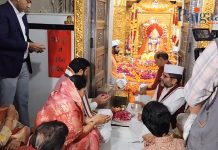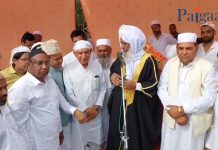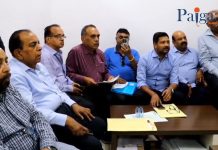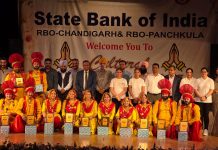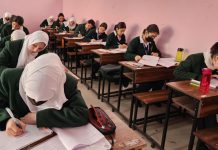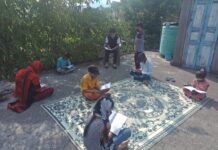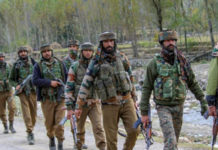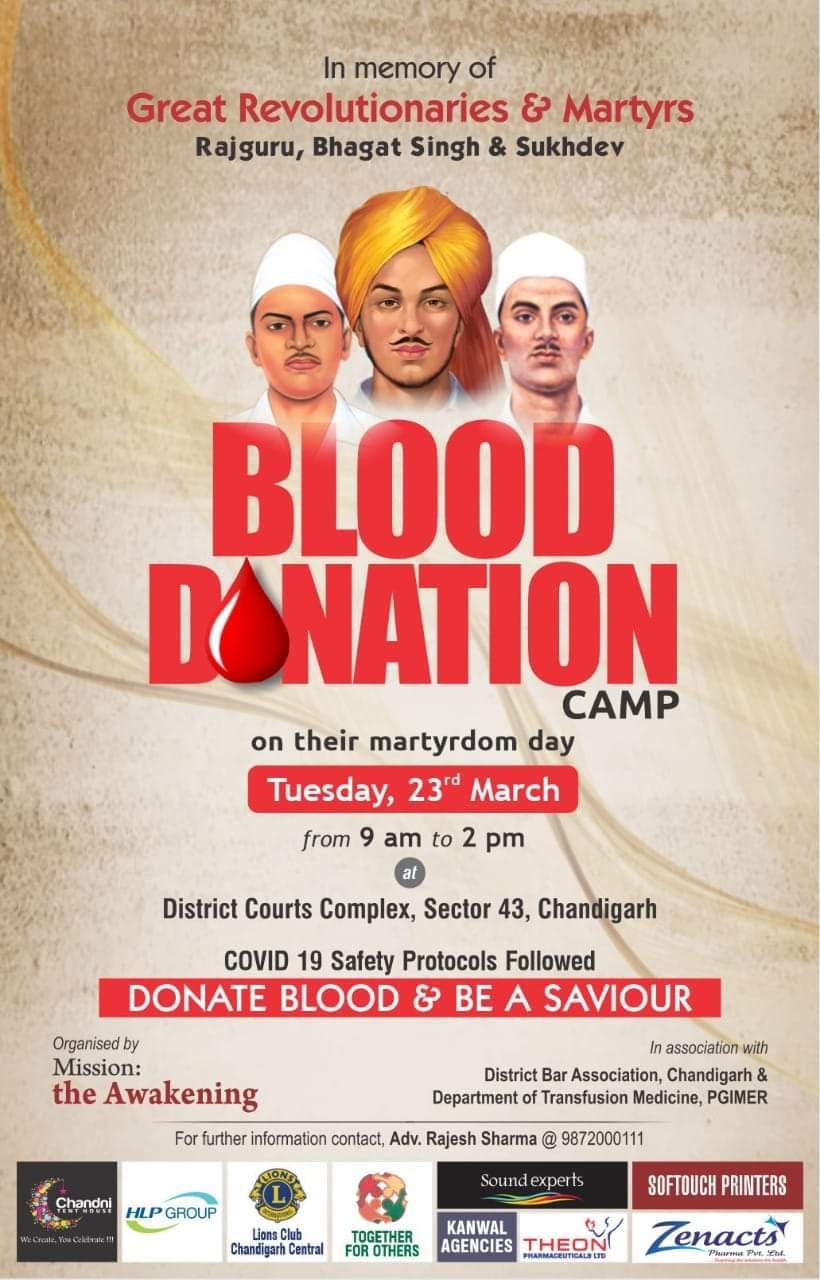The emergence of Gandhi played a pivotal role in the history of Indian Nationalism. In the year 1915, Gandhi returned to India. During his initial days, he spent his time at the Sabarmati Ashram in Ahmadabad, quite unknown to the masses. He sought guidance from Gopal Krishna Gokhle in assuming his political stance. It was Gokhle’s advice to Gandhi that he should first study in details the socio-political scenario prevalent in the country and then act accordingly. However, Gandhi soon emerged on to the political scenario through his able leadership in certain local conflicts.
Champaran Satyagraha
Gandhi gave voice to the cause of the oppressed cultivators in Champaran district of Bihar who were suffering under tyranny of the European indigo-planters. Threatened by the outbreak of large scale Satyagraha struggle, the government finally succumbed to the pressure by passing a law allowing concessions to the peasants in 1917.
Agitation at Kheda district in Gujarat
1918 Gandhi resumed leadership to fight for the cause of plague and famine affected peasants of Kheda district in Gujarat. Some concessions were also granted to these cultivators by the government.
Industrial dispute in Ahmadabad
The weapon of Satyagraha was employed by Gandhi, yet another time in an industrial dispute between the workers and owners of a cotton mill in Ahmadabad. The consequence was a wage hike for the workers.
Character of Gandhian nationalism
At a time when the fabric of the Indian society was tearing apart, Gandhi accomplished the Herculian task of unifying the nation. Confronted with diverse political ideologies like hard line extremism, the moderate approach and the newly emerging communist forces the confused Indians found solace in the simple philosophies of Gandhi. Gandhi’s leadership infused coherence in the isolated mass movements, which so far was the characteristic feature of the Indian freedom movement. In all his struggles, the weapon of passive resistance reigned supreme and the political consciousness of Indians across class boundaries received an impetus.
He worked assiduously for the upliftment of the downtrodden like the Dalits and gave them a new identity. Women, under his aegis, found back their long lost confidence and actively participated in the tasks of national cause.
As a visionary, he realized right at the onset that the real strength of India lies in communal harmony and brotherhood. Gandhian nationalism was rooted in its historical past and at the same time welcoming the progressive trends of modernity.
Gandhi’s popular appeal
In the year following 1919, the Indian National Movement celebrated the emergence of Gandhi as a national leader, steering the anti-British movements. The Rowlatt Act of 1919, which catapulted Jallianwallah Bagh massacre and the Khilafat Movement that triggered the Non-co operation movement, brought Gandhi to the center stage of Indian politics.
Rowlatt Act 1919:
The Sedition Committee headed by Justice Sydney Rowlatt led to the passing of Rowtatt Act which empowered the government with powers to use arms to suppress all unlawful and dangerous activities. It was called the Black Act and it was widely opposed. The Rowlatt Act was ruthlessly applied leading to Jallianwallah Bagh massacre at Amritsar on 13th April 1919.
A country wide campaign was already launched by Gandhi on 6th April, 1919 against the Rowlatt act. The Jallianwallah Bagh massacre added fuel to the fire. Gandhi used Satyagraha for the very first time in this agitation that assumed a national character. The people responded with great enthusiasm and a remarkable political awakening was witnessed in India.
The Khilafat Movement
The main object of the Khilafat movement was to force the British government to change its attitude towards Turkey and restore the Turkish Sultan (Khalifa) to his former position. The Khilafat committee that was spearheading the movement unanimously asked Gandhi to lead the movement. A programme of non-violent non-cooperation to protest the government behavior was initiated under Gandhi’s leadership. In the Khilafat issue too, the British government failed to keep their promise. These incidents triggered an anti British feeling in Gandhi and he emerged as a non co-operator.
The Non-co operation Movement:
The people were asked to boycott government educational institutions, law courts and legislatures, to give up foreign cloth, to surrender officially conferred titles and honours. Through these negative programmes, the Indians sought to refuse to cooperate with the British government.
The adoption of the Non-cooperation movement by the Congress gave it a new energy and from January 1921, it began to register considerable success all over the country. The general mood of the people became quite rebellious. The Chauri-Chaura incident that took place in Gorakhpur district of U.P on 5th February 1922 that resulted in the death of 22 policemen, made Gandhiji to abruptly call off the non cooperation movement.
The significance of Non-cooperation movement is that with this the Indian Nationalist movement acquired real mass base for the first time with the participation of peasants, workers, students’ lawyers, teachers, etc. The Congress became the organizer and leader of the masses in their freedom struggle. It marked the height of Hindu-Muslim unity. It also marked the emergence of Gandhi as the undisputed leader of India.
With the rise of Gandhi a whole new philosophy permeated into every sphere of the Indian psyche. Gandhi’s political ideals were merely an extension of his spiritual tenets, which were rooted in deep human values. Gandhi’s greatness lies not only within pioneering a unique fervor in Indian politics and the rise of the masses, but in the way he revolutionized the entire way of looking at politics as an extension of mankind’s inherent greatness, enriched with an innate belief in and commitment to truth.
First phase 1930-31
The Civil Disobedience Movement led by Mahatma Gandhi, in the year 1930 was an important milestone in the history of Indian Nationalism. The prevalent political and social circumstances played a vital role in the launching of the Civil Disobedience Movement.
The Simon Commission was formed by the British Government that included solely the members of the British Parliament, in November 1927, to draft and formalize a constitution for India. The chairmanship of the commission rested with Sir John Simon was accused of bringing an ‘All-White Commission.’ The Simon Commission was rejected by all political and social segments of the country.
At the Calcutta Session of the Indian National Congress held in December, 1928, the British government was warned that if India was not granted the status of a dominion, a Civil Disobedience Movement would be initiated in the entire country.
None of the efforts made by the Congress received any favorable response from the British government. The 11 points ultimatum of Gandhiji to Lord Irwin was ignored by the British Government.
The Lahore Congress of 1929 authorized the Working Committee to launch a programme of civil disobedience including non-payment of taxes. The committee also invested Gandhiji with full powers to launch the movement.
On the historic day of 12th March 1930, Gandhi inaugurated the Civil Disobedience Movement by conducting the historic Dandi Salt March, where he broke the Salt Laws imposed by the British Government.
Followed by an entourage of seventy nine Ashramites, Gandhi embarked on his march from his Sabarmati Ashram to Dandi that is located on the shores of the Arabian Sea. Dandi Salt March had an immense impact on the entire nation. Each and every corner of the country was gripped in a unique fervor of nationalism. Soon this act of violation of the Salt Laws assumed an all India character. There were reports of Satyagrahas and instances of law violation from Bombay, Central and United Provinces, Bengal and Gujarat.
The program of the Civil Disobedience Movement incorporated besides the breaking of the Salt Laws, picketing of shops selling foreign goods and liquor, bonfire of cloth, refusal to pay taxes and avoidance of offices by the public officers and schools by the students. Even the women joined forces against the British. Those from orthodox families did not hesitate to respond to the call of the Mahatma. In North-East Rani Gaidilieu raised the banner of rebellion against foreign rule. In North-western provinces, under the leadership of Khan Abdul Ghaffar Khan, popularly known as ‘Frontier Gandhi’ the
Pathans organized the society of Khudai Khidmatgars (or Servants of God) known popularly as Red Shirts.
The people joined hartals, demonstrations and the campaign to boycott foreign goods and to refuse to pay-taxes. In many parts of the country, the peasants refused to pay land revenue and rent and had their lands confiscated.
In a bid to thwart the movement, the British government resorted to ruthless repression, lathi changes and firing. Over 90,000 Satyagrahis, including Gandhiji and other congress leaders were imprisoned and Congress declared illegal.
Gandhi-lrwin Pact
The civil disobedience movement led to Gandhi-lrwin Pact that was signed in March 1931. This was to bring about a compromise between the government and the Congress. The Government agreed to withdraw all ordinances and end prosecutions, release all political prisoners, restore the confiscated property of the Satyagrahis and permitted the free collection or manufacture of salt. The Congress in turn agreed to suspend the civil disobedience movement and to participate in the Second Round-Table conference.
Second phase from 1932-34:
Gandhi attended The Second Round Table Conference in London. At this Conference, it was claimed by Mahatma Gandhi that the Congress represented more than eighty five percent of the Indian population. Gandhi’s claim was not endorsed by the British and also the Muslim representative.
The Second Round Table Conference proved to be futile for the Indians and Gandhi returned to the country without any positive result. The political scene in India thereafter assumed an acute dimension.
The Viceroy, Lord Willingdon, in the absence of Gandhi, adopted the policy of repression. The Gandhi-Irwin Pact was violated and the Viceroy took to the suppression of the Congress. The Congress was declared illegal by the government and it arrested most of the leading Congress leaders.
The Congress was held responsible by the government to have instigated the ‘Red Shirts’ to participate in the civil disobedience movement, led by Khan Abdul Ghaffar and provoking the cultivators of U.P to refuse to pay land revenue. Adding to this was the serious economic crisis that took hold of the country.
Under such circumstances, the resumption of the civil disobedience movement was inevitable. The Congress Working Committee took the decision to restart the civil disobedience movement, as the British government was not prepared to relent.
Gandhi resumed the movement in January 1932 and appealed to the entire nation to join in. The Viceroy was also informed of the stance assumed by the Congress. Four ordinances were promulgated by the government to deal with the situation. The police was given the power to arrest any person, even on the basis of mere suspicion. The movement was gaining strength when it was suddenly side tracked with the announcement of Communal Award (1932) by the British Prime-minister Ramsay Mac Donald. Gandhi commenced his twenty one days of fast on May 8th, 1933, to make amends for the sins committed against the untouchables by the caste Hindus. The second phase of the civil disobedience movement lacked the organization that marked its first phase. Nonetheless the entire nation put up a tough fight and the movement continued for six months.
The Civil Disobedience Movement was suspended, when Mahatma Gandhi withdrew mass Satyagraha on July 14th 1933. The Congress officially withdrew it in May 1934.
Significance of Civil disobedience movement
It had the objective of achieving complete independence. It involved deliberate violation of law and was evidently more militant. There was wide participation of women. Although The Civil Disobedience Movement failed to achieve any positive outcome, it was an important juncture in the history of Indian independence. The leadership of Mahatma Gandhi had a beneficial impact. The warring factions within the Congress united under the aegis of the civil disobedience movement. Satyagraha was put on a firm footing through its large scale usage in the movement. Last but not the least India rediscovered its inherent strength and confidence to crusade against the British for its freedom.
The Nehru Report; the Round Table Conferences
The Nehru Report
The Secretary of State, Lord Birkenhead asked Indian leaders to draft a constitution to which all parties would agree. This led to an all parties’ conference that was held in May, 1928 which appointed a committee to draft a constitutional scheme. The committee was headed by Moti Lal Nehru and its report came to be known as the Nehru Report. Its other members were Subhash Chander Bose, Sir Ali Iman, Sir Tej Bhadur Sapru, G.R. Pradhan, M.S. Aney, Shuab Qureshi and Sardar Mangal Singh.
The following were the recommendations advanced by the Nehru Report:
The report favoured dominion status in which India would be a federation of linguistic provinces.There should be federal form of government with residuary powers vested in the center.India should have a parliamentary form of government headed by a Prime Minister and six ministers appointed by the Governor General.There should be bi-cameral legislature.There should be no separate electorate for any community.It opposed the system of weightage for minorities and the idea of separate electorates.It agreed to reservation of Muslim seats only in the provinces where Muslim population was at least ten percent, but this was to be in strict proportion to the size of the community.Muslims should enjoy one-fourth representation in the Central Legislature.Sindh should be separated from Bombay only if the Committee certified that it was financially self-sufficient.The N. W. F. P. should be given full provincial status.A new Kanarese-speaking province Karnatic should be established in South India.Hindi should be made the official language of India.
The Nehru report was placed in the annual session of the Congress held at Lucknow on 10th August, 1928 where it was adopted unanimously. The report was rejected by the Muslim League. Muhammad Ali Jinnah put forth his fourteen point demands.
The Round Table Conferences
The three Round Table Conferences of 1930–32 were a series of conferences organized by the British Government to discuss constitutional reforms in India. The conference was held in London. The conference resulted from a review of the Government of India Act of 1919, undertaken in 1927 by the Simon Commission. They were conducted as per the recommendation by the report submitted by the Simon Commission in May 1930.
Demands for swaraj, or self-rule, in India had been growing increasingly strong. By the 1930s, many British politicians believed that India needed to move towards dominion status. However, there were significant disagreements between the Indian and the British political parties that the Conferences would not resolve.
First Round Table Conference (November 1930 – January 1931)
The Round Table Conference was opened officially by Lord Irwin on November 12, 1930 at London and chaired by the British Prime Minister, Ramsay MacDonald. The three British political parties were represented by sixteen delegates. There were fifty-seven political leaders from British India and sixteen delegates from the princely states. In total 89 delegates from India attended the Conference. However, the Indian National Congress, along with Indian business leaders, kept away from the conference. Many of them were in jail for their participation in Civil Disobedience Movement.
The conference started with 6 plenary meetings where delegates put forward their issues. These were followed by discussions on the reports of the sub-committees on Federal Structure, Provincial Constitution, Minorities, Burma, North West Frontier Province, Franchise, Defence, Services and Sindh. These were followed by 2 more plenary meetings and a final concluding session.
The idea of an All-India Federation was moved to the centre of discussion. All the groups attending the conference supported this concept. The responsibility of the executive to the legislature was discussed, and Dr. B.R. Ambedkar demanded a separate electorate for the so-called Untouchables.
The first round table conference had 73 representatives, from all Indian states and all parties except the Indian National Congress, which was waging a civil disobedience campaign against the government. Its principal campaign was an insistence on Parliamentary form of government based on an the federal principle and on dominion status as the goal of constitutional development.
It was difficult for progress to be made in the absence of Congress (Indian National Congress) but some advances were made. The princes declared they would join future federation of India as long as their rights were recognized and the British agreed that representative government should be introduced on provincial level.
The Second Round Table Conference (September 7, 1931)
The second session (September–December 1931) was attended by Mahatma Gandhi as the Congress representative; it failed to reach agreement, either constitutionally or on communal representation.
The Gandhi-Irwin Pact opened the way for Congress participation in second Round Table Conference that began on September 7, 1931. Mahatma Gandhi was invited from India and attended as the sole official Congress representative accompanied by Sarojini Naidu and also Madan Mohan Malaviya, Ghanshyam Das Birla, Muhammad Iqbal, Sir Mirza Ismail (Diwan of Mysore), S.K. Dutta and Sir Syed Ali Imam.
Gandhi claimed that the Congress alone represented political India; that the Untouchables were Hindus and should not be treated as a “minority”; and that there should be no separate electorates or special safeguards for Muslims or other minorities. These claims were rejected by the other Indian participants. According to this pact, Gandhi was asked to call off the Civil Disobedience Movement (CDM) and if he did so the prisoners of the British government would be freed excepting the criminal prisoners. During the Conference, Gandhi could not reach agreement with the Muslims on Muslim representation and safeguards. At the end of the conference Ramsay MacDonald undertook to produce a Communal Award for minority representation, with the provision that any free agreement between the parties could be substituted for his award.
Gandhi took particular exception to the treatment of untouchables as a minority separate from the rest of the Hindu community. He clashed with the leader of depressed classes, Dr.B. R. Ambedkar, over this issue: the two eventually resolved the situation with the Poona Pact of 1932.
Third Round Table Conference (November – December 1932)
The third and last session assembled on November 17, 1932 to December 24, 1932). Only forty-six delegates attended since most of the main political figures of India were not present. The third session was shorter and less important, with neither the Congress nor the British Labour Party attending. The result of these deliberations was the Government of India Act, 1935, establishing provincial autonomy and also a federal system that was never implemented.


